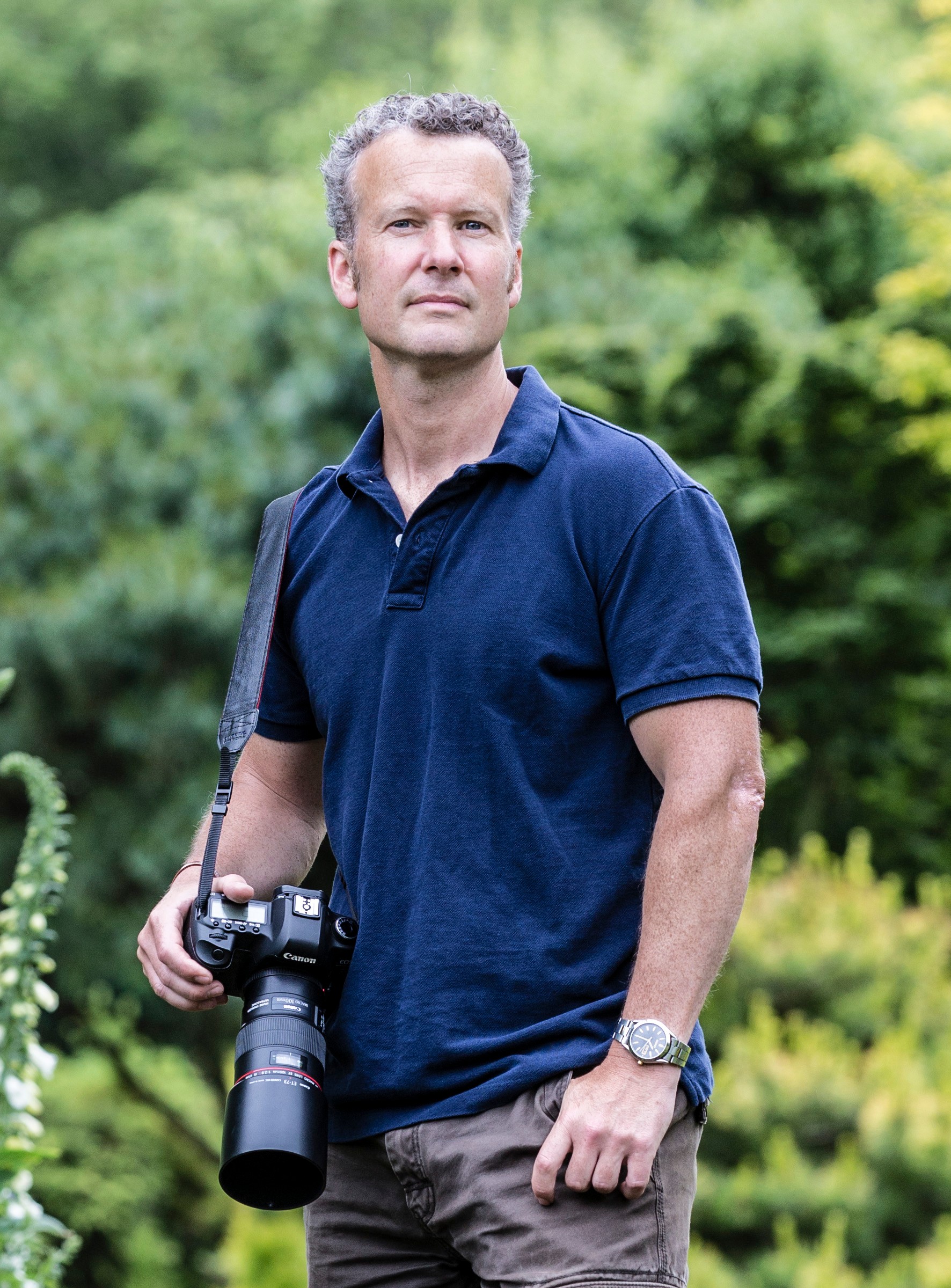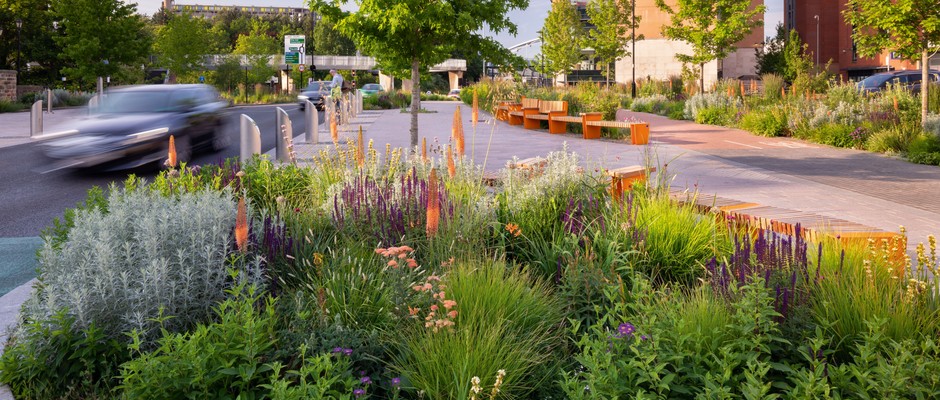
What is Grey to Green? The initiative bringing colour to Sheffield city centre
The city of Sheffield has been given a green makeover thanks to a groundbreaking environmental strategy. Words Jodie Jones, photographs Richard Bloom
The urban planting in Sheffield city centre is astonishing. Everywhere you look there are beautiful examples of just how much can be achieved with a robust palette of well-chosen palette of well-chosen plants, and nowhere is this more apparent than in the Castlegate area of the city where the succinctly named Grey to Green project is helping to transform rundown streets into a flower-filled haven for humans and wildlife.
Until 2008 this area was filled with four lanes of traffic, but following the building of a new outer ring road, a new scheme with just two lanes and much reduced vehicle use (with associated dedicated cycle ways and pedestrian routes) was possible. The liberated space is now filled with a connected sequence of planted beds, rain gardens and bioswales, creating the UK’s longest ‘green street’, and largest retrofit urban sustainable drainage scheme.
What City development scheme opening up areas of planting and new public green spaces. Where Sheffield city centre. Size 1.3km of new footpaths and cycleways. Soil A mix of local recycled material to create low-fertility and be free draining. Climate Prone to flooding. Hardiness zone USDA 8.
The project was the brainchild of visionary Simon Ogden, who was then head of city centre regeneration. He developed the idea that a revolutionary landscape scheme could be part of the city’s response to the catastrophic Sheffield floods of 2007, when the River Don, which runs through the city, burst its banks, causing two deaths and an estimated £1 billion worth of damage.
Simon approached Nigel Dunnett, evangelical exponent of naturalistic urban planting schemes and professor of planting design at the University of Sheffield, for help in developing the project.
The real genius of this scheme is that it works on so many different levels. Primarily, it is a sustainable drainage system (SUDS) that captures occasional extreme rainfall in free-draining temporary holding areas until it can naturally percolate back into the surrounding ground. This relieves pressure on the urban network of drains and significantly reduces the risk of localised flooding. The tree layer contributes to urban cooling, and the linear nature of the scheme creates a continuous green wildlife corridor.
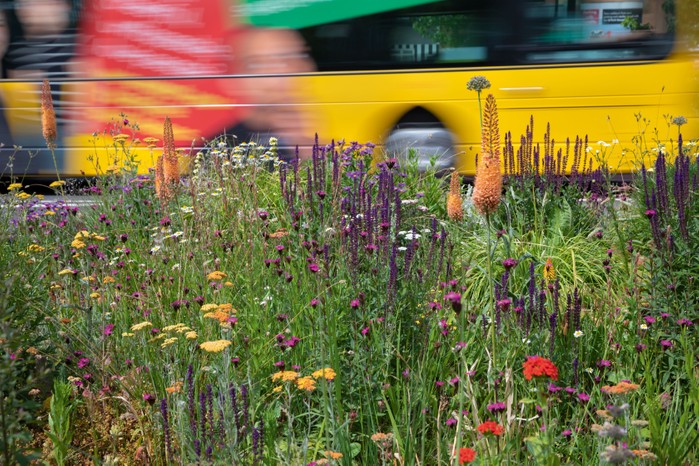
“But in addition to the environmental and visual benefits, this was a genuinely visionary move by Sheffield City Council to establish a very high-quality landscape scheme to create an attractive environment that would encourage businesses to move back into the area,” says Nigel.
And, of course, it is extremely beautiful. These planting schemes are positively gardenesque in their richness, diversity and impact. Small multi-stemmed trees and large shrubs provide a permanent structure that anchors a seasonally shifting mixture of surprisingly interesting perennials, ranging from the spring-flowering native Pulsatilla vulgaris and Primula veris, through spring and summer bulbs such as the spires of orange Eremurus x isabellinus ‘Cleopatra’, alliums and lilies, to an abundance of robust late daisies. A matrix of ornamental grasses contributes to the late-season display.
“People really respond to colourful naturalistic planting, and having dramatic winter-green plants such as the New Zealand sedge, Carex secta, contributes to year-round appeal,” says Nigel. “In cities, where people can easily lose contact with the natural world, there seems to be an almost magnetic attraction to colourful, flower-rich, yet natural planting.”
Nigel believes the plantings probably have ten years before they will need a wholesale revamp, but Sheffield City Council is now fully on board. The ethos is embedded, the concept is being rolled out around the city and that can only be good for the economy, good for people and good for the planet.
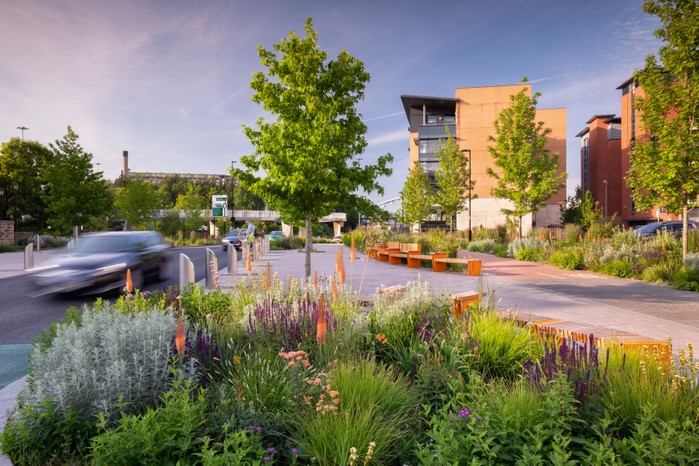
City roads were rerouted to allow for new areas of planting, footpaths and cycleways. The planting beds have been constructed to cope with water runoff from the streets with plants that capture pollutants, including plastic particles from car tyres.
More like this
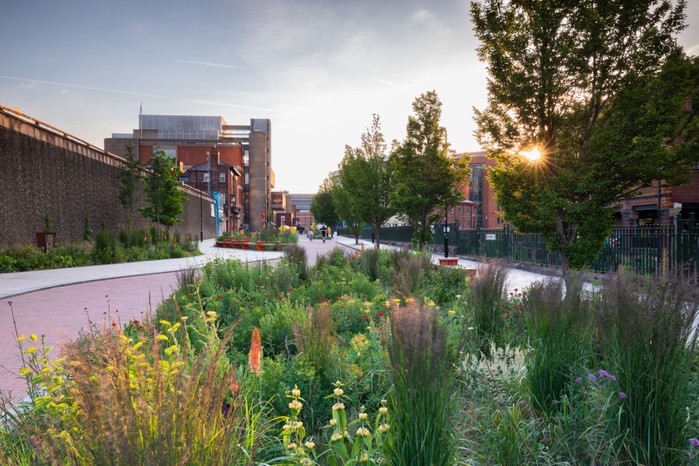
Clumps of Calamagrostis x acutiflora ‘Karl Foerster’ create upright punctuation for a diverse multi-layered planting. Even though Nigel has included non natives, such as Sisyrinchium striatum and Eremurus x isabellinus ‘Cleopatra’, this provides a long flowering that generates incredible value for pollinators and other invertebrates.
What are bioswales?
Bioswales are shallow depressions that act in the same way as rain gardens; collecting, slowing-down and cleaning surface water-runoff. They can fill up temporarily with water during heavy rainfall, but are not bog gardens because the water can drain away, either into the soil beneath, or into subsurface drains.
In the Grey to Green scheme, the bioswales slope gently on each side to the central low point. Water flows into them from the road surface along their entire edge. In a garden setting, a good way to think of a bioswale is as a glorified ditch.
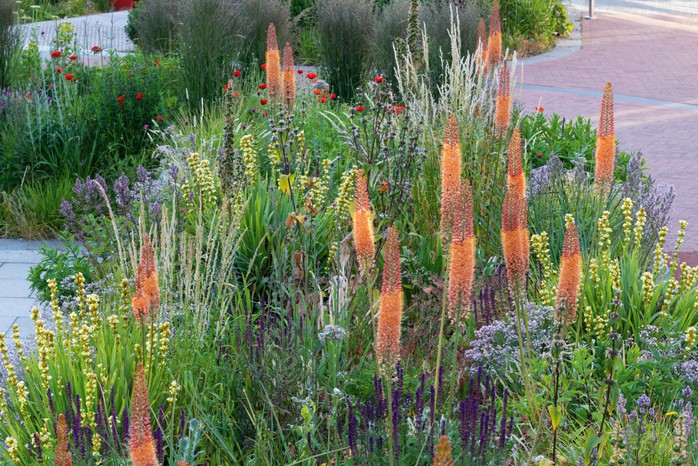
Included among the planting planting are wooden totem-like structures, designed to create habitats for pollinators and other wildlife. The street furniture picks up on the striking burnt- orange spires of Eremurus x isabellinus ‘Cleopatra’.
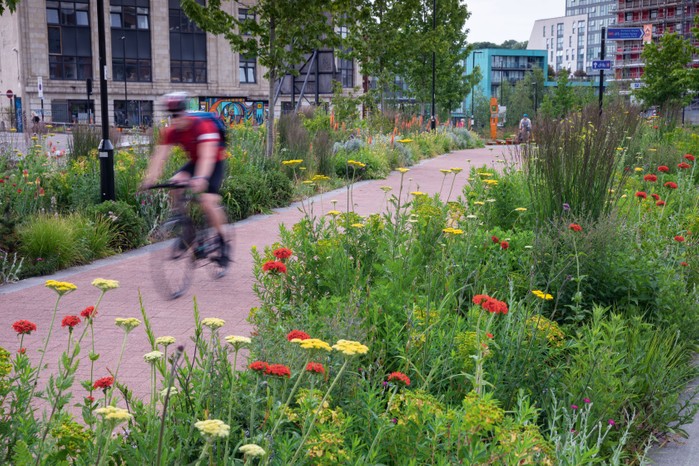
Cycleways allow riders to weave through the planting where the bright flowers of golden-yellow Achillea ‘Coronation Gold’ and stand-out red Lychnis chalcedonica help brighten the daily commute, and are particularly good inclusions for pollinators.
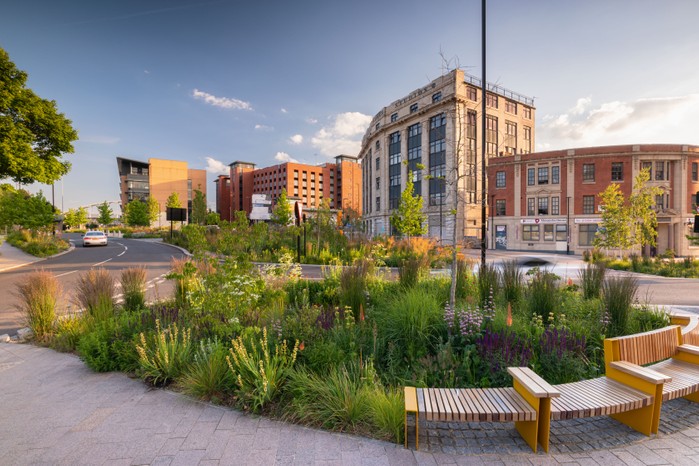
One of the outstanding benefits of introducing the planting beds is the fact that 24,000 bathtubs’ worth of water is prevented from entering Sheffield’s sewage treatment works each year. The project has shown a 561 per cent increase in biodiversity.

The plant mixtures include plants with a wide range of ecological tolerances from those that prefer wetter conditions to those that are happy when it’s very dry. This ensures that the schemes are resilient from season to season.
8 key plants of Sheffield's Grey to Green project
Erigon 'Dunkelste Aller’
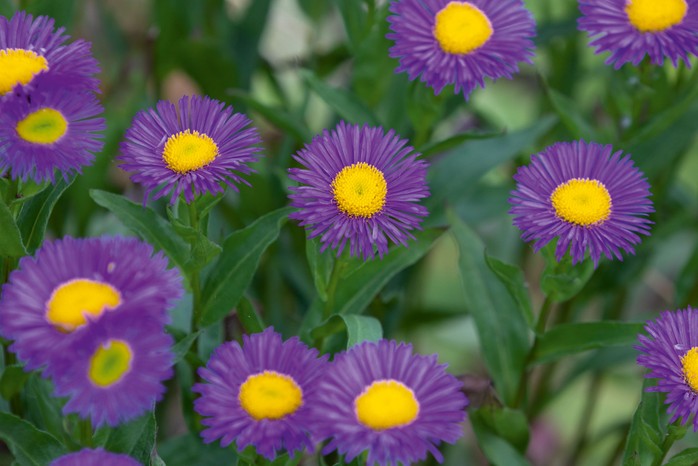
An upright fleabane that has unusual deep violet-purple, ray-like flowers and eye-catching yellow centres. 1m x 50cm.
Phlomoides tuberosa
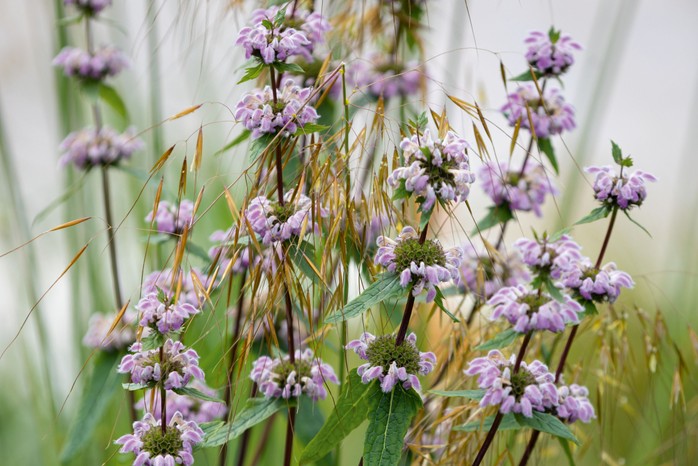
Whorls of lilac-purple, hooded flowers are held on tall, dark-purple stems. The flowers fade well to provide interest and structure in winter. 1.5m x 50cm.
Achillea ‘Paprika’
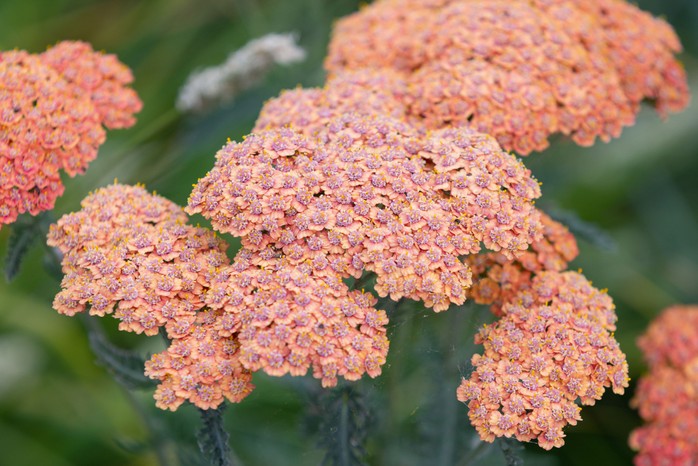
Opening an orange-red, the flowers of ‘Paprika’ fade as they age to a more dusty orange. A good self-seeder in free-draining soil and important pollinator attractor. 1m x 50cm.
Stipa gigantea

Robust grass providing a long season of interest, particularly for its tall, arching, oat-like panicles that mature to a tawny gold. 2.5m x 1m.
Sisyrinchium striatum
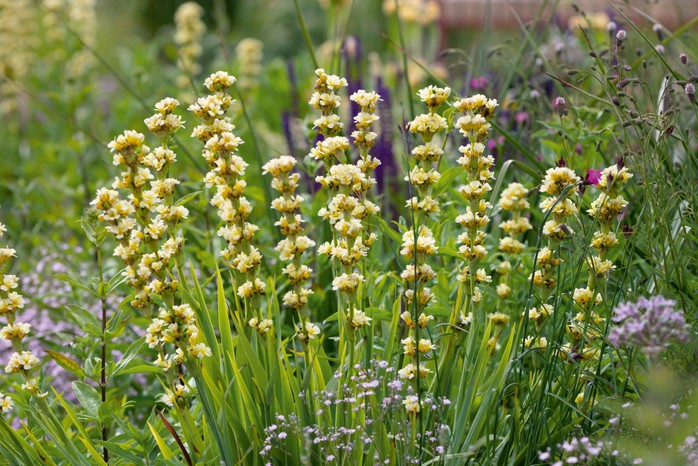
Good structural plant with strongly upright, lance-shaped leaves that give rise to tall stems carrying clusters of creamy-yellow flowers. Will self-seed.
1m x 50cm.
Salvia nemorosa ‘Caradonna’
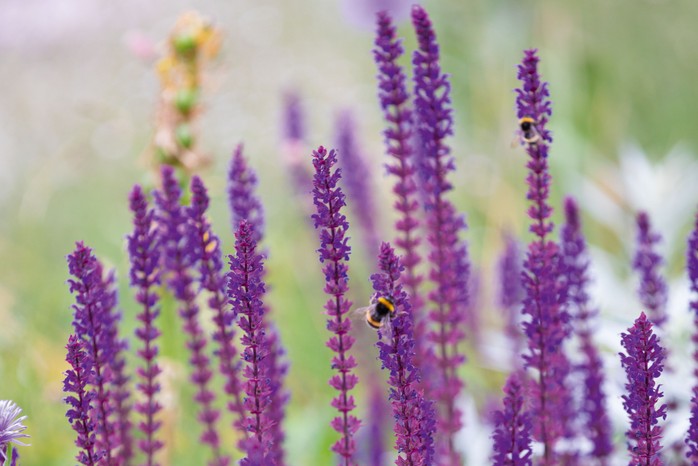
Clump-forming member of the sage family with long-lasting display of deep-purple flower spikes. 50cm x 50cm.
Origanum ‘Rosenkuppel’

Low-growing perennial forming clumps with rounded leaves and clusters of deep-rose-coloured flowers, loved by insects. 60cm x 60cm.
Artemisia ludoviciana ‘Silver Queen’
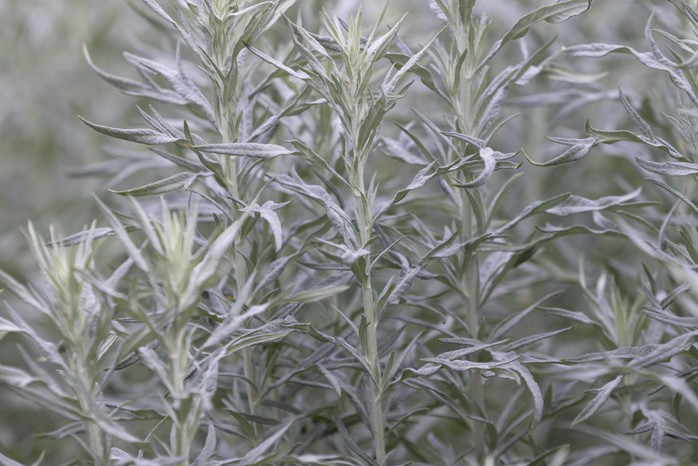
Striking, slender, silver-grey leaves that act well as a foil to purples and pinks. Good as a ground cover plant and usefully drought tolerant. 1m x 1m.
Click here for Nigel Dunnett's Gardens Illustrated Masterclass about how to create long-season planting schemes
Authors
Jodie Jones is a freelance garden writer, who works for titles that include Gardeners' World Magazine, The Daily Telegraph and Gardens Illustrated.

Niwaki bundle worth £57 when you subscribe
Subscribe to Gardens Illustrated magazine and claim your Niwaki bundle worth £57
*UK only
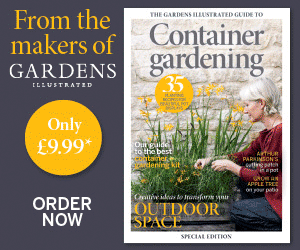
Container Gardening Special Edition
The Gardens Illustrated Guide to Container Gardening.
In this special edition, discover colourful flower combinations and seasonal planting schemes for pots designed by leading plantspeople, and essential know-how for container gardening success. Just £9.99 inc UK p&pBy entering your details, you are agreeing to our terms and conditions and privacy policy. You can unsubscribe at any time.
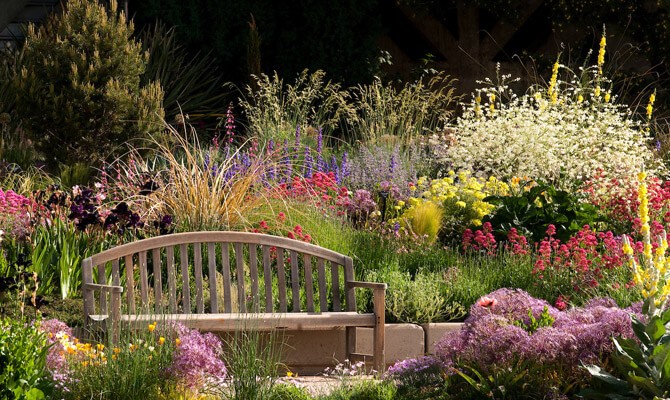
Gardens of the Globe
From botanical wonders in Australia to tranquil havens closer to home in Ireland, let this guide help you to discover some of the most glorious gardens around the world
By entering your details, you are agreeing to our terms and conditions and privacy policy. You can unsubscribe at any time.


